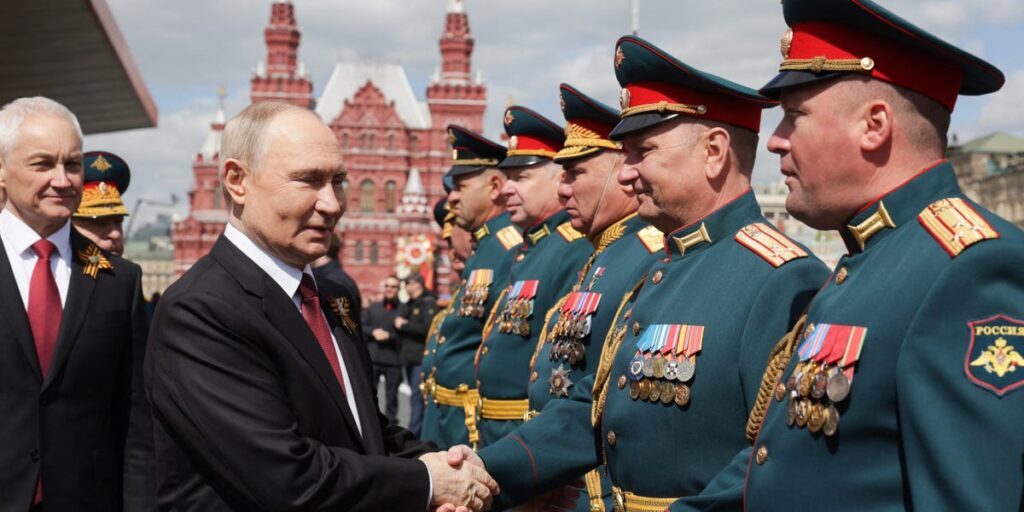Russia is spending record amounts on defense. But it’s falling behind in building the advanced, modern military it needs for future wars, according to a new report.
Russia’s full-scale invasion of Ukraine triggered sweeping sanctions that not only damaged its ability to procure advanced technology but also weakened its military-scientific base, wrote Mathieu Boulègue, a consulting fellow in the Russia and Eurasia program at London-based Chatham House, in a report published on Monday.
“This damage, in turn, affects the rate of military innovation and R&D. More importantly, it determines how the Kremlin will wage war in the future,” wrote Boulègue, a specialist in Eurasian security and defense issues.
Russia is set to spend 6.3% of its GDP on defense this year — a post-Cold War high.
However, the country’s military-industrial complex has been “degraded” by trade restrictions and the demands of wartime production, according to Boulègue.
“Russia’s ability to produce military hardware has been severely impacted, and its ability to innovate and adopt modern military technology constrained as a result of these challenges,” he added.
With sanctions cutting off access to critical imports, Russia has been left scrambling to replace advanced components with inferior stand-ins. As early as August 2022, Russian state-owned carrier Aeroflot began stripping spare parts from working aircraft due to sanctions-induced supply shortages.
In October, Russia filmed its troops using a Soviet howitzer, showing its military stockpiles were under strain.
Boulègue assessed that the state of Russia’s military-industrial complex is one of regression, not progress.
“Russia will likely have to simplify and slow its military production, accept reduced quality of outputs and manage a form of ‘innovation stagnation’ in its research and development,” he wrote, referring to Russia’s state armament programme from 2025 to 2034.
As a result, Russia’s pathway to military innovation is likely to remain incremental — built on small tweaks to old systems rather than genuine breakthroughs.
“Innovation generally takes the form of integrating technological solutions directly into proven, older-generation systems — which in turn makes them ‘modern,'” Boulègue wrote.
Russia’s military sector has adopted a “retain-and-adapt” approach because military production is no longer innovation-led.
“In other words, Russia ‘innovates’ through ‘smart adaptation’ under technical and economical constraints that have a negative, cumulative effect at the tactical level,” he added.
In the short term, Russia’s military-industrial complex will likely keep producing systems that are “good enough” to pose a clear and constant threat to Ukraine, NATO, and the West. But its long-term ability to compete with advanced military powers is eroding.
The stresses on Russia’s military-industry complex also mean the broader economy is under increasing strain, despite initial signs of wartime growth.
“The war economy brings ‘good’ macroeconomic results, but is causing real-world problems such as increased inflation, decreasing wages and purchasing power, and a liquidity crisis in the banking sector,” wrote Boulègue.
Russia’s economy has shown signs of fatigue recently. Manufacturing activity contracted sharply in June as weak demand and a strong ruble affected exports and jobs. Low oil prices are also hitting the country’s all-important oil and gas sector.
Meanwhile, a demographic crisis and competition for labor with the military are also hurting the economy in the long and short term.
Read the full article here


